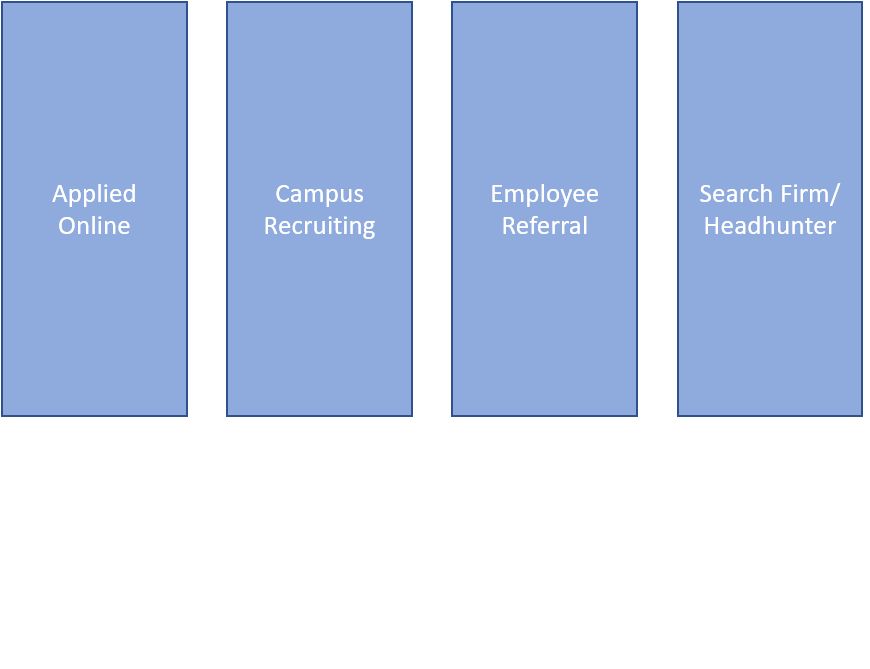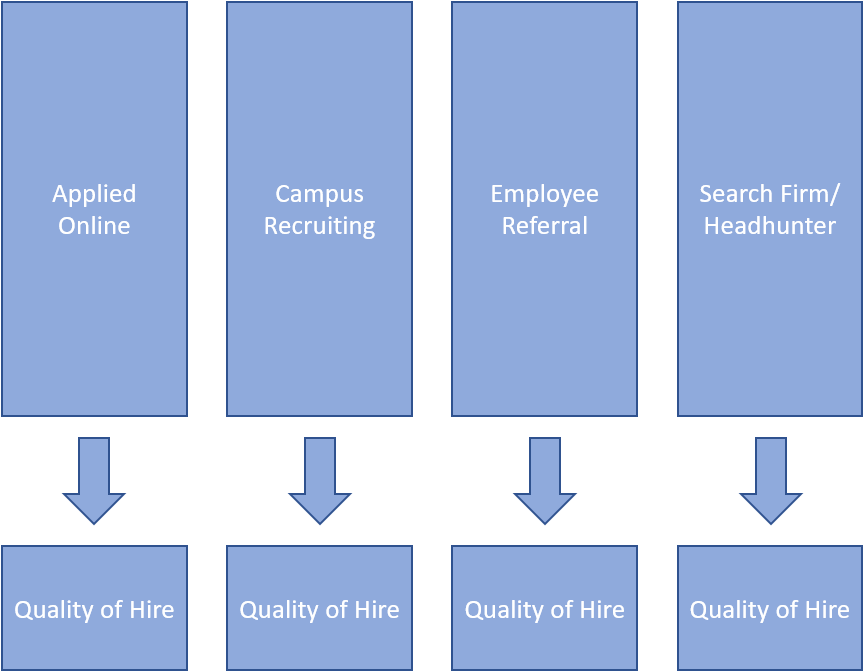Applying the HR analytics process
HR Analytics: Exploring Employee Data in R

Ben Teusch
HR Analytics Consultant
Applying the process to recruiting

Applying the process to recruiting

Quality of hire
- What makes one hire better than another?
- retention, or how long the employee stays
- their manager's satisfaction with the hire
- job performance
- the amount of time it takes to become fully productive
names(recruitment)
"attrition" "performance_rating" "sales_quota_pct"
"recruiting_source"
Calculating the attrition rate
$$\text{attrition rate} = \frac{\text{attrition}}{\text{headcount}}$$
If $\text{attrition} = 1$ when the employee left, this can be rewritten as:
$$\text{attrition rate} = mean(\text{attrition})$$
Review of tools from dplyr
library(dplyr)
recruitment %>%
group_by(recruiting_source) %>%
summarize(highest_performance = max(performance_rating)) %>%
arrange(highest_performance)
# A tibble: 4 x 2
recruiting_source highest_performance
<chr> <dbl>
1 Search Firm 3
2 Referral 4
3 Applied Online 5
4 Campus 5
New tools
recruitment %>%
count(recruiting_source)
# A tibble: 4 x 2
recruiting_source n
<chr> <int>
1 Applied Online 130
2 Campus 56
3 Referral 45
4 Search Firm 10
Let's practice!
HR Analytics: Exploring Employee Data in R

